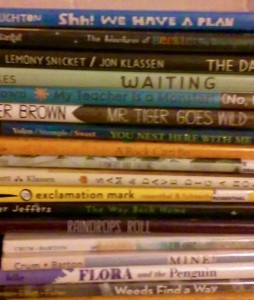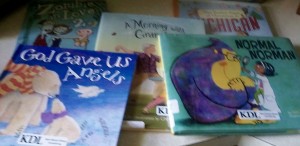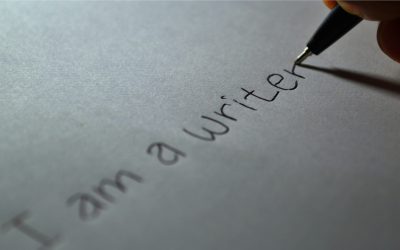Joanne Sher is my guest today. As a dedicated student of writing picture books, Joanne knows the ins and outs of the craft. Enjoy the essentials she shares with us.
Joanne: Many assume writing for children is easier than writing for adults. After all, the word counts are lower, right? And kids can’t understand as much as adults, so you can write simpler – correct?
I have to tell you that, in MY opinion, it is actually MORE difficult. And, as far as writing picture books themselves, it is totally unlike any other form of writing I have encountered. But it is also LOADS of fun.
Welcome to the wonderful world of writing picture books.
Let’s start with a definition. What is a picture book? It is not simply a book with pictures.
A picture book is a book – generally for children – in which the illustrations are as important as (or even more important than) the words in telling the story.
So a picture book is a joint venture. The author tells one part of the story, and the illustrator another. But the catch? As the author, you DON’T get to tell the illustrator (who, unless you are a really good artist, isn’t you) what to do.
 Got it? Good. Let’s talk about some things the picture book author needs to keep in mind
Got it? Good. Let’s talk about some things the picture book author needs to keep in mind
1. KEEP IT SHORT: As a rule, today’s picture book manuscripts are 500 words or less (ideally less). Every word must count, even more than in other types of writing. As one professional (sorry, can NOT remember who it was) said, you must make every word fight for its existence.
2. LEAVE ROOM FOR THE ILLUSTRATOR: Remember my definition up there? You as author are not telling the whole story. Picture books are an interaction between, not only the book and the reader, but the words and the illustrations.
But how do you do this? This is a continual learning process for me. But I can give you my most helpful suggestion.
Save physical descriptions for only the most critical aspects. Anything that an illustrator can show, hair color, height, weather – even whether the character is an animal or a person, should not be in the text, unless it is absolutely critical to the story. Instead, use your words for descriptions of senses that are not “illustratable” – smell, taste, touch, hearing.
3. GRAB THEM FROM THE START: I’m sure you’ve heard that if you don’t grab the reader’s attention in the first chapter (or even the first page) of your novel, you’ve likely lost your reader. Well, your chance to hook the reader for a picture book is even shorter.
If you don’t grab the reader’s attention on the first page (which is often a single sentence, or even shorter), there won’t BE a second page. The book will either get shut, or the kid will tune out. Remember how short preschoolers’ attention spans are. The hook needs to be strong, and it needs to be early.
4. KEEP PAGE TURNS IN MIND: A page turn in a picture book is like a chapter break in a novel. You need something to encourage the reader to move on to the next section. Picture books are generally 32 pages, which means 16 (or less) page turns, and sometimes the copyright and half-title and such are included in that page count.
Not only do you need to give your reader a reason to go on to the next page, but you need to be sure that there are enough things going on to illustrate – enough scenes. You don’t want every illustration to be of the same thing.
5. END IT WITH AH, AWW, OR HA: Multi-published Picture Book Author Linda Ashman came up with this easy-to-remember summary of picture book endings, and the vast majority of picture books do fit into one of these categories.
The Ah! ending is the surprise ending. Aww is the sweet, mushy ending. Finally- the Ha! ending. Ending with humor is almost always a winner. Kids love to laugh, and if you can make the humor for both the child AND adult, you’re on your way.
Which reminds me of my LAST point:
6. REMEMBER, PICTURE BOOKS AREN’T JUST FOR KIDS: If you have (or had) kids, you likely remember reading the same book over and over and OVER to him or her. Picture books, for the most part, are not read by the intended audience – they are read TO them, and more than once.
Have a bit of sympathy for the parent. Try to make the story/pictures/humor enjoyable for parents AND kids. And because they are generally read aloud, be sure your text is as fun to say as it is to read.
Want to write a children’s picture book? Here’s 6 essentials. Click to tweet.
 Joanne Sher is a Jew by birth, a Christian by rebirth, and a writer by gift. After working as a newspaper reporter, then pursuing inspirational fiction, she has spent the last two-plus years learning the craft of writing children’s picture books. A native Southern Californian, she now lives happily in West Michigan with her husband and two kids – an almost-teen daughter and an-almost driver son. In addition to writing, she is also a freelance editor and the blogger at the FaithWriters blog.
Joanne Sher is a Jew by birth, a Christian by rebirth, and a writer by gift. After working as a newspaper reporter, then pursuing inspirational fiction, she has spent the last two-plus years learning the craft of writing children’s picture books. A native Southern Californian, she now lives happily in West Michigan with her husband and two kids – an almost-teen daughter and an-almost driver son. In addition to writing, she is also a freelance editor and the blogger at the FaithWriters blog.
Visit her at http://www.joannesher.com.
Facebook: https://www.facebook.com/joannesherwriter/.



 RSS - Posts
RSS - Posts



Great advice Joanne and Zoe!
Thanks for sharing.
I tweeted and pinned to: https://www.pinterest.com/pin/568720259177208240/
Good luck and God’s blessings to both of you
PamT
Thanks so much, Pam! I appreciate you stopping by and sharing!
Joanne, love this post! I have a feeling that I will be looking at the picture books I read to my grandkids in a much different way now. LOL! No wonder you enjoy the exercise of analyzing all those books.
It’s like learning to write a novel – I now tend to analyze the TV shows I watch and am getting pretty good at guessing who-done-it before the story reveals it. 🙂
I hope it DOES change your perspective, Bonnie 🙂 Picture books really are fascinating- so much to learn about tight writing – and other stuff too. Thanks for stopping by, my friend!